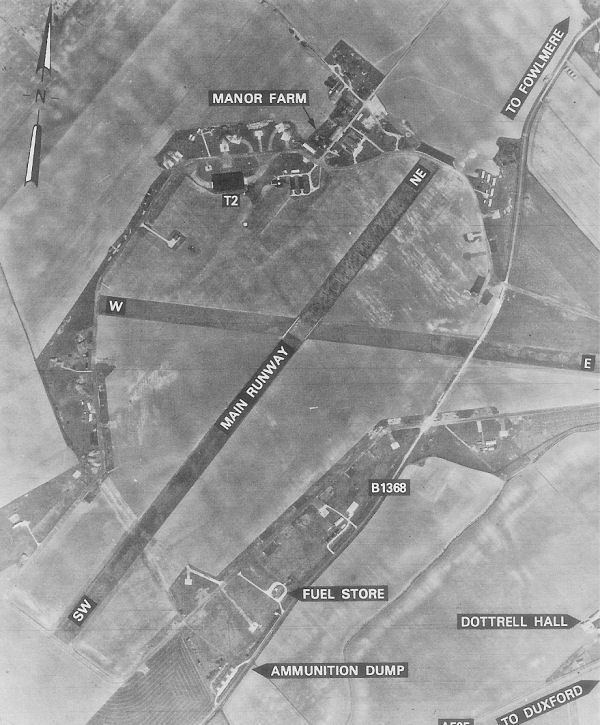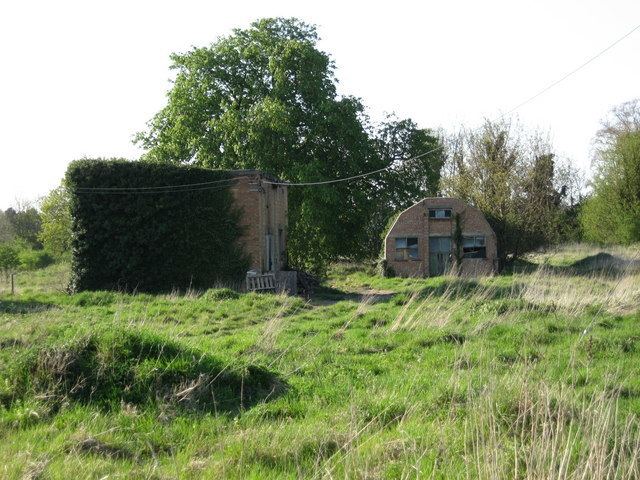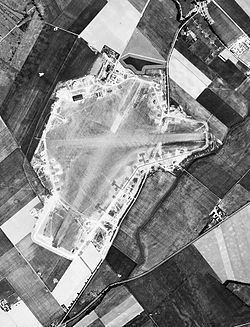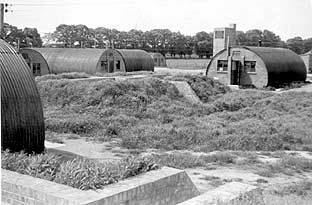Code FW Occupants 339th Fighter Group Year built 1940 Occupant 107th Airlift Wing | In use 1946-1946 (1946) Elevation 38 m Owner Air Ministry | |
 | ||
Type Royal Air Force station Operator Royal Air Force
United States Army Air Forces 07/25 710 metres (2,329 ft) Grass | ||
Royal Air Force Fowlmere or more simply RAF Fowlmere is a former Royal Air Force station located 4.2 miles (6.8 km) northeast of Royston, Hertfordshire and 8.8 miles (14.2 km) southwest of Cambridge, Cambridgeshire, England.
Contents
- First World War
- Royal Air Force use
- United States Army Air Forces use
- Postwar Royal Air Force use
- Current use
- References

First World War
Flying at Fowlmere originated in 1918 when the airfield was used by Royal Air Force

Flying cadets of the Air Service, United States Army were trained at Fowlmere by RAF instructors, prior to their deployment to the Western Front in France. After the First World War ended, the hangars were all demolished along with the assorted buildings by 1923.
Royal Air Force use

With the eruption of the Second World War, Fowlmere was intended to be a satellite for nearby RAF Duxford and was used by 19 Sqn with Supermarine Spitfires along with:

United States Army Air Forces use

When the airfield was turned over to the USAAF, Fowlmere was expanded to meet the requirements of a complete fighter group. The airfield was assigned USAAF designation Station 378 It was allocated to the United States Army Air Forces Eighth Air Force fighter command.
USAAF Station Units assigned to RAF Fowlmere were:

339th Fighter Group
The 339th Fighter Group arrived at Fowlmere from Rice AAF, California on 4 April 1944. The group was under the command of the 66th Fighter Wing of the VIII Fighter Command. Aircraft of the group were identified by a red/white chequerboard pattern.
The group consisted of the following squadrons:
The 339th FG Began operations with a fighter sweep on 30 April. The unit engaged primarily in Boeing B-17 Flying Fortress/Consolidated B-24 Liberator escort duties during its first five weeks of operations, and afterwards flew many escort missions to cover the operations of medium and heavy bombers that struck strategic objectives, interdicted the enemy's communications, or supported operations on the ground.
The group frequently strafed airfields and other targets of opportunity while on escort missions. the 339th received a Distinguished Unit Citation for operations on 10 and 11 September 1944. On the first of those days, when it escorted bombers to a target in Germany and then attacked an aerodrome near Erding, the group destroyed or damaged many enemy planes despite the intense fire it encountered from anti-aircraft guns and small arms. The following day the bomber formation being escorted to Munich was attacked by enemy fighters, but members of the 339th group destroyed a number of the interceptors and drove off the others and at the same time, other members of the 339th were attacking an airfield near Karlsruhe, where they encountered heavy fire but were able to destroy or damage many of the aircraft parked on the field.
The 339th provided fighter cover over the English Channel and the coast of Normandy during the invasion of France in June 1944. Strafed and dive-bombed vehicles, locomotives, marshalling yards, anti-aircraft batteries, and troops while Allied forces fought to break out of the beachhead in France. Attacked transportation targets as Allied armies drove across France after the breakthrough at Saint-Lô in July. Flew area patrols during the airborne attack on the Netherlands in September. Escorted bombers to, and flew patrols over the battle area during the German counterattack in the Ardennes (Battle of the Bulge), December 1944-January 1945. Provided area patrols during the assault across the Rhine in March 1945.
Among all these varied activities, the outstanding feature of this group's combat record is the large number of enemy aircraft it destroyed in the air or on the ground during its one year of operations.
The 339th Fighter Group returned to Camp Kilmer, New Jersey during October 1945 and was inactivated on 18 October.
Postwar Royal Air Force use
With the departure of the Americans, Fowlmere was used briefly by No. 11 Group RAF RAF Fighter Command until January 1946 then closed and placed into care and maintenance status. It was eventually sold back to local farmers in 1957.
Current use
With the end of military control, the concreted areas and buildings of Fowlmere airfield were largely ground into aggregate and sold for local construction projects.
The T-2 hangar is still in use by a local farmer and there are a few decaying huts on the west side of Fowlmere village. Other than that, there is little else to indicate previous use of the site as an active fighter airfield. Only fragments of taxi-track remain, and part of a secondary runway is used for light aircraft.
